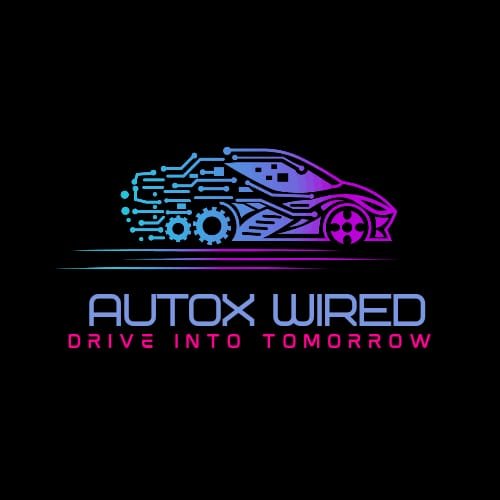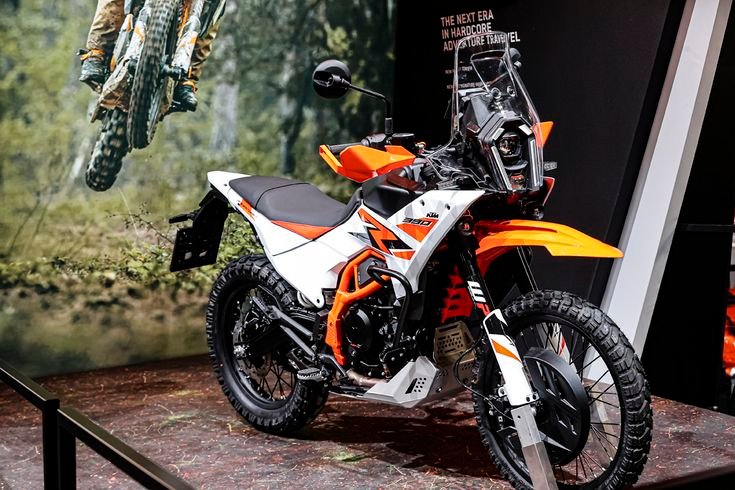
In the modern era, software has become an integral part of the automotive industry, transforming the way vehicles are designed, manufactured, and operated. From enhancing safety and performance to providing advanced infotainment and connectivity features, software plays a crucial role in shaping the future of transportation. This detailed article explores the impact of software on modern vehicles, examining its applications, benefits, challenges, and future prospects.
The Role of Software in Modern Vehicles
Evolution of Automotive Software
The integration of software in vehicles has evolved significantly over the past few decades. Initially, software was used for basic functions such as engine control and diagnostics. However, advancements in technology have led to the development of complex software systems that manage various aspects of modern vehicles, including safety, performance, connectivity, and user experience.
Key Applications of Automotive Software
Engine Control Units (ECUs)
ECUs are the brain of modern vehicles, controlling various functions such as fuel injection, ignition timing, and emissions management. Advanced software algorithms optimize engine performance, improve fuel efficiency, and reduce emissions.
Advanced Driver Assistance Systems (ADAS)
ADAS technologies enhance vehicle safety and convenience by providing features such as adaptive cruise control, lane-keeping assist, and automatic emergency braking. These systems rely on sophisticated software to process data from sensors and cameras, making real-time decisions to assist the driver.
Infotainment and Connectivity
Modern vehicles come equipped with advanced infotainment systems that provide entertainment, navigation, and connectivity features. Software enables seamless integration with smartphones, voice recognition, and access to a wide range of apps and services.
Autonomous Driving
The development of autonomous vehicles is heavily reliant on software. Autonomous driving systems use complex algorithms to process data from sensors, cameras, and Lidar, enabling the vehicle to navigate and make decisions without human intervention.
Telematics and Over-the-Air Updates
Telematics systems provide real-time data on vehicle performance, location, and diagnostics. Over-the-air (OTA) updates allow manufacturers to remotely update software, fix bugs, and add new features, enhancing vehicle performance and user experience.
Benefits of Automotive Software
Enhanced Safety
Accident Prevention
Software-driven safety features such as automatic emergency braking, collision avoidance systems, and blind-spot detection help prevent accidents by alerting the driver and taking corrective actions.
Driver Assistance
ADAS technologies assist drivers in various situations, reducing the risk of human error. Features like adaptive cruise control and lane-keeping assist make driving safer and more comfortable.
Improved Performance and Efficiency
Engine Optimization
Software algorithms optimize engine performance by precisely controlling fuel injection, ignition timing, and other parameters. This leads to improved fuel efficiency, reduced emissions, and enhanced power delivery.
Vehicle Dynamics
Software-controlled systems such as traction control, electronic stability control, and adaptive suspension improve vehicle handling and stability, providing a smoother and safer driving experience.
Connectivity and User Experience
Infotainment
Advanced infotainment systems offer a wide range of entertainment options, including streaming music, videos, and internet browsing. Software enables seamless integration with smartphones, providing a connected and convenient user experience.
Navigation
Software-driven navigation systems provide real-time traffic updates, route optimization, and points of interest, enhancing the driving experience and reducing travel time.
Remote Diagnostics and Maintenance
Real-Time Monitoring
Telematics systems monitor vehicle performance and diagnostics in real-time, providing valuable data to both the driver and the manufacturer. This enables proactive maintenance and early detection of potential issues.
Over-the-Air Updates
OTA updates allow manufacturers to remotely update software, fix bugs, and add new features. This reduces the need for physical visits to service centers and ensures that vehicles remain up-to-date with the latest improvements.
Challenges in Automotive Software
Complexity and Integration
Software Complexity
Modern vehicles contain millions of lines of code, making software development and maintenance highly complex. Ensuring that all software components work seamlessly together is a significant challenge.
Integration with Hardware
Integrating software with various hardware components, such as sensors, cameras, and ECUs, requires precise coordination. Any mismatch or incompatibility can lead to performance issues or system failures.
Cybersecurity
Vulnerability to Attacks
As vehicles become more connected, they are increasingly vulnerable to cyberattacks. Hackers can exploit software vulnerabilities to gain unauthorized access to vehicle systems, posing significant safety and privacy risks.
Data Privacy
The collection and processing of vast amounts of data raise concerns about data privacy. Manufacturers must ensure that data is securely stored and transmitted, and that users’ privacy is protected.
Regulatory and Compliance Issues
Compliance with Standards
Automotive software must comply with various industry standards and regulations. Ensuring compliance with safety, emissions, and cybersecurity standards is a complex and ongoing process.
Certification and Validation
Software used in critical vehicle functions must undergo rigorous testing and validation to ensure reliability and safety. This process can be time-consuming and costly.
Case Studies: Impact of Software on Modern Vehicles
Tesla
Tesla is a pioneer in the use of automotive software, with its vehicles heavily reliant on software for various functions.
- Autopilot and Full Self-Driving (FSD): Tesla’s Autopilot and FSD systems use advanced software algorithms to enable semi-autonomous and autonomous driving. These systems rely on continuous software updates to improve functionality and safety.
- Infotainment and Connectivity: Tesla’s infotainment system offers a wide range of features, including streaming services, internet browsing, and gaming. Over-the-air updates allow Tesla to add new features and improvements regularly.
- Remote Diagnostics: Tesla vehicles are equipped with telematics systems that provide real-time data on vehicle performance and diagnostics. This enables proactive maintenance and early detection of potential issues.
BMW
BMW has embraced software to enhance performance, safety, and user experience.
- iDrive System: BMW’s iDrive infotainment system offers intuitive controls, voice recognition, and seamless connectivity with smartphones. Software updates regularly enhance functionality and user experience.
- Driver Assistance Systems: BMW’s ADAS features, such as adaptive cruise control and lane-keeping assist, rely on advanced software algorithms to improve safety and convenience.
- ConnectedDrive: BMW’s ConnectedDrive services provide real-time traffic updates, remote diagnostics, and over-the-air updates, ensuring that vehicles remain up-to-date with the latest improvements.
Future Prospects of Automotive Software
Advancements in Autonomous Driving
Level 3 and Beyond
The development of Level 3 and higher autonomous vehicles will rely heavily on software. These vehicles will be capable of handling most driving tasks without human intervention, significantly enhancing safety and convenience.
Sensor Fusion
Combining data from multiple sensors, such as Lidar, radar, and cameras, with advanced software algorithms will enhance the accuracy and reliability of autonomous driving systems.
Artificial Intelligence and Machine Learning
Predictive Analytics
AI-driven predictive analytics will enable vehicles to anticipate and respond to potential issues before they occur. This will improve safety, performance, and reliability.
Personalization
Machine learning algorithms will enable vehicles to learn from user preferences and behavior, providing a highly personalized driving experience. Features such as adaptive seating, climate control, and infotainment settings will enhance comfort and convenience.
Enhanced Connectivity
Vehicle-to-Everything (V2X) Communication
V2X communication will enable vehicles to interact with other vehicles, infrastructure, and pedestrians, enhancing safety and traffic management. Software will play a crucial role in processing and analyzing this data in real-time.
5G Connectivity
The deployment of 5G networks will provide high-speed, low-latency connectivity, enabling advanced features such as real-time traffic updates, remote diagnostics, and over-the-air updates.
Sustainable Mobility
Electric Vehicles (EVs)
Software will play a critical role in optimizing the performance and efficiency of electric vehicles. Advanced battery management systems, regenerative braking, and intelligent charging algorithms will enhance the driving experience and extend vehicle range.
Energy Management
Software-driven energy management systems will enable vehicles to interact with the power grid, optimizing charging times and supporting renewable energy sources. Vehicle-to-grid (V2G) technology will enhance the sustainability of electric mobility.
The impact of software on modern vehicles is profound, transforming the automotive industry and shaping the future of transportation. From enhancing safety and performance to providing advanced infotainment and connectivity features, software plays a crucial role in delivering a superior driving experience.
As technology continues to evolve, the role of software in automotive design, manufacturing, and operation will only become more significant. The future of automotive software looks promising, with advancements in autonomous driving, artificial intelligence, enhanced connectivity, and sustainable mobility driving continued innovation.
In conclusion, software is a driving force behind the evolution of modern vehicles, enabling new possibilities and redefining the relationship between humans and machines. As the automotive industry navigates the challenges and opportunities of the digital age, the integration of software will remain at the forefront of this exciting journey.
ALSO READ: Fuel Efficiency: Innovations in Reducing Fuel Consumption





